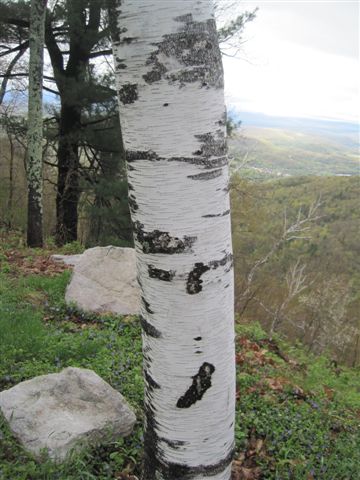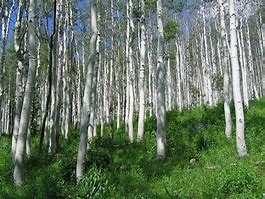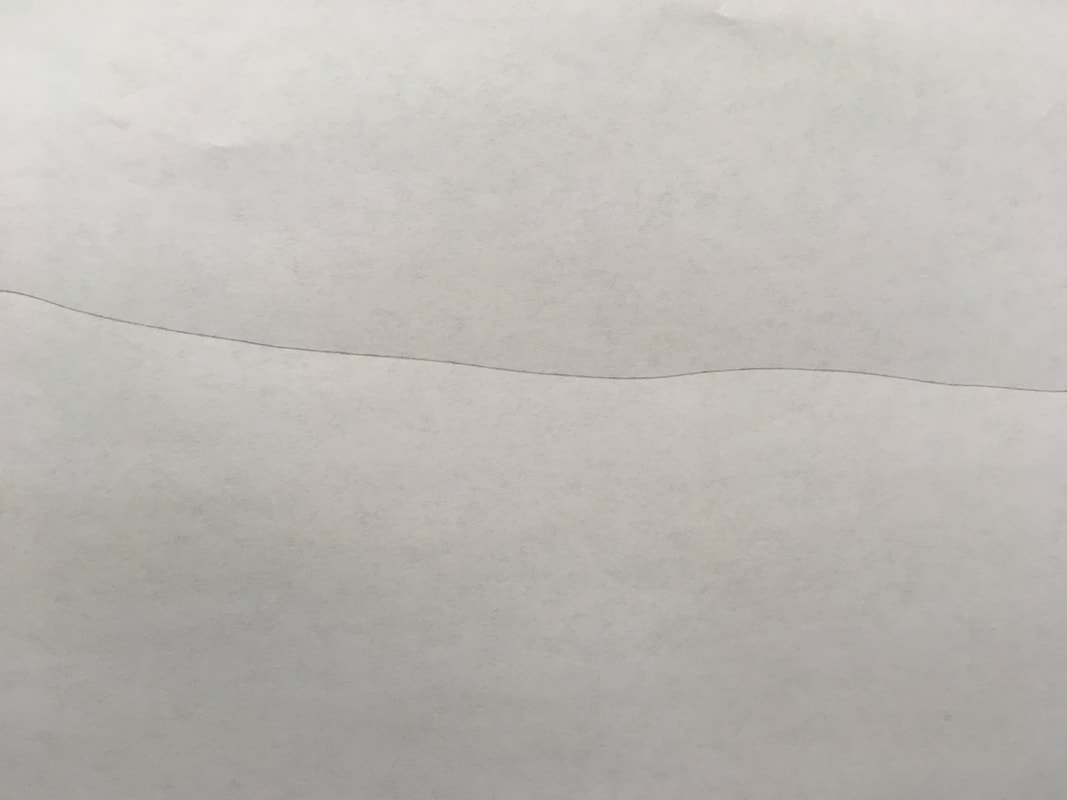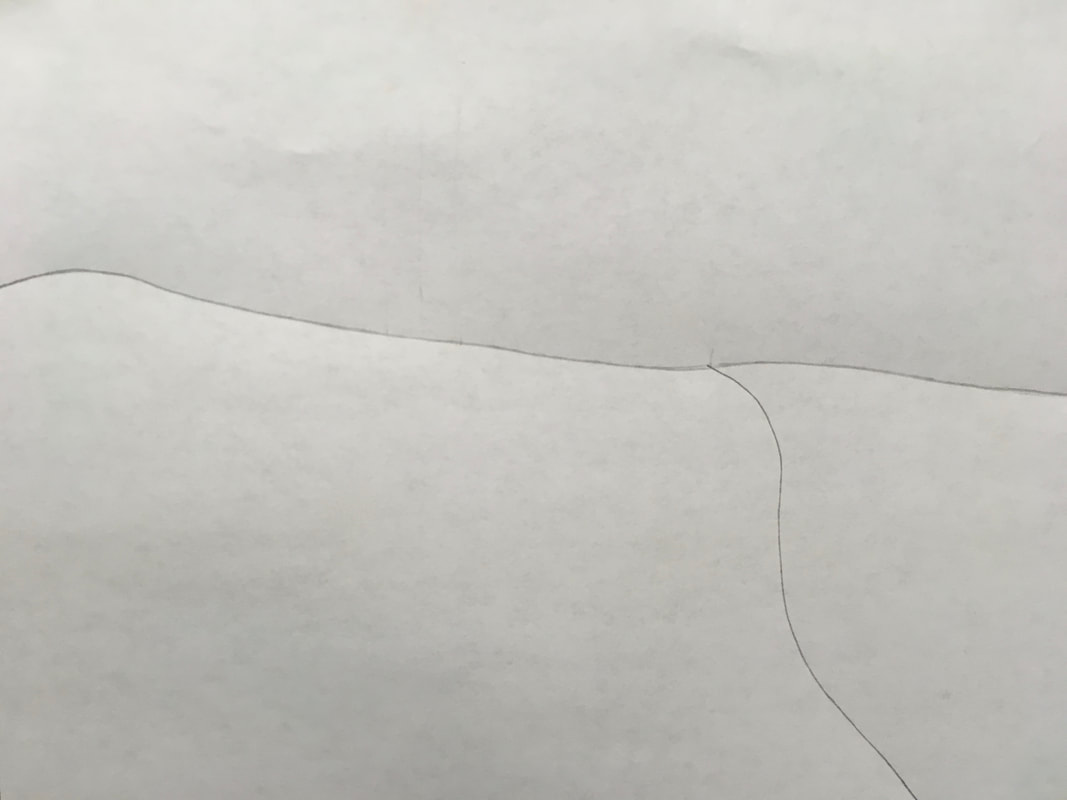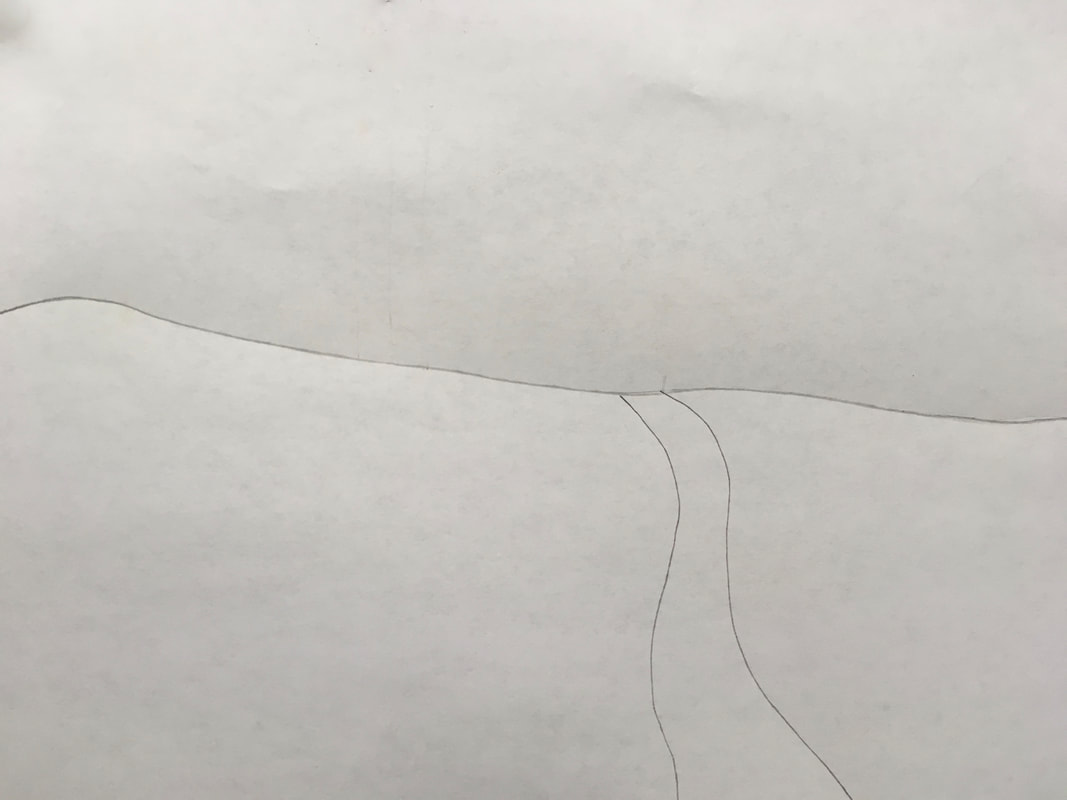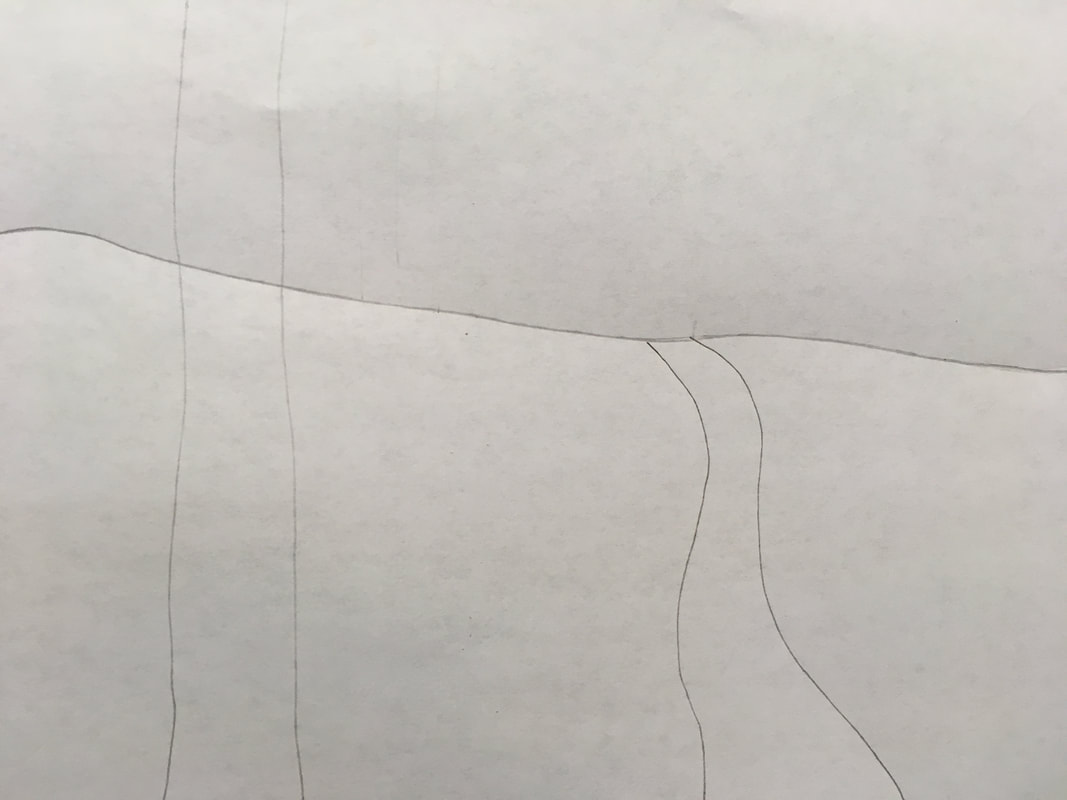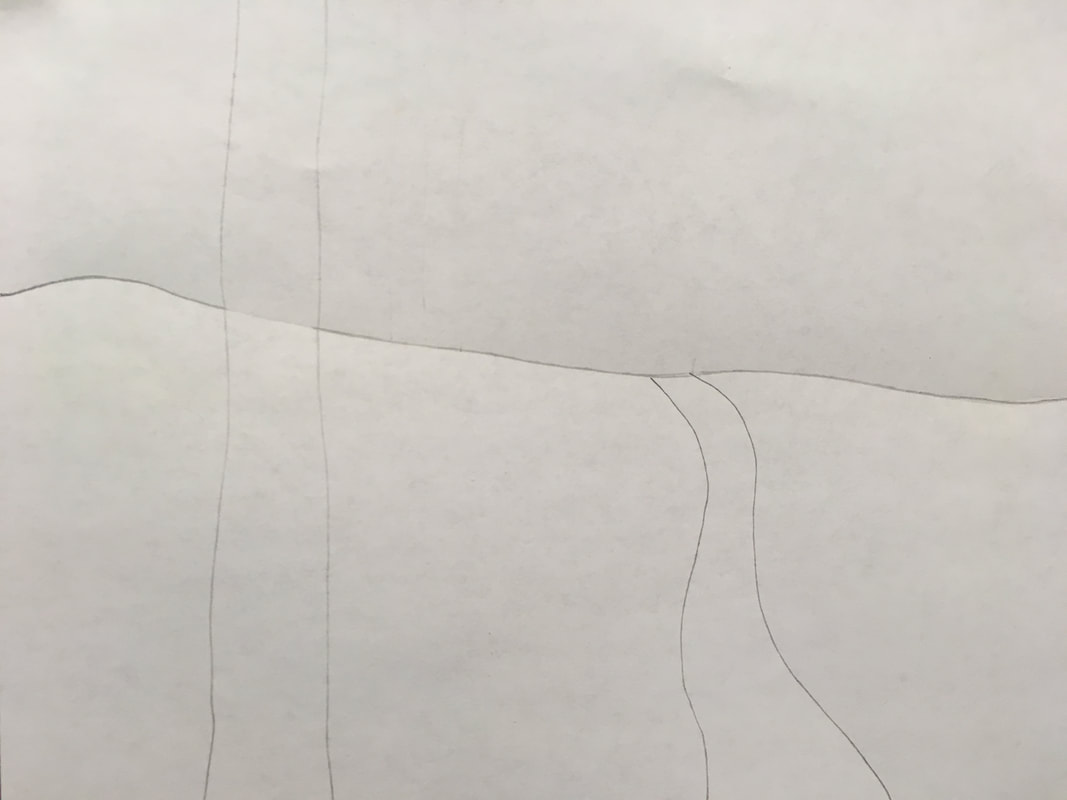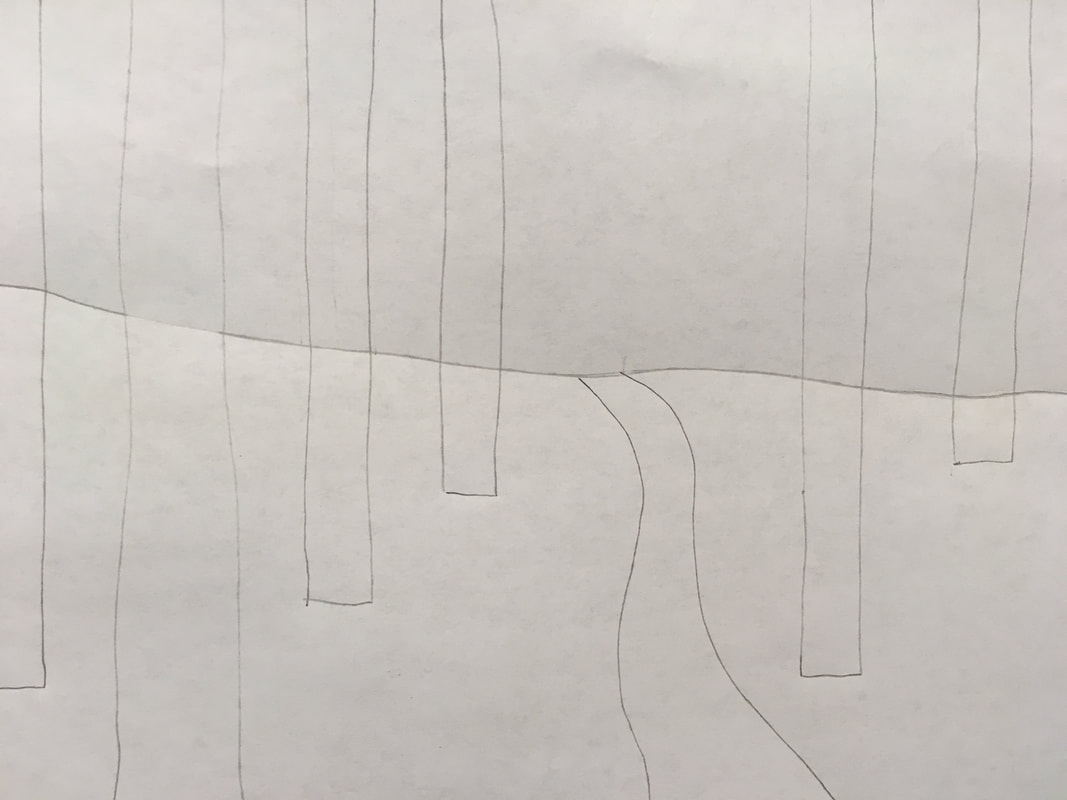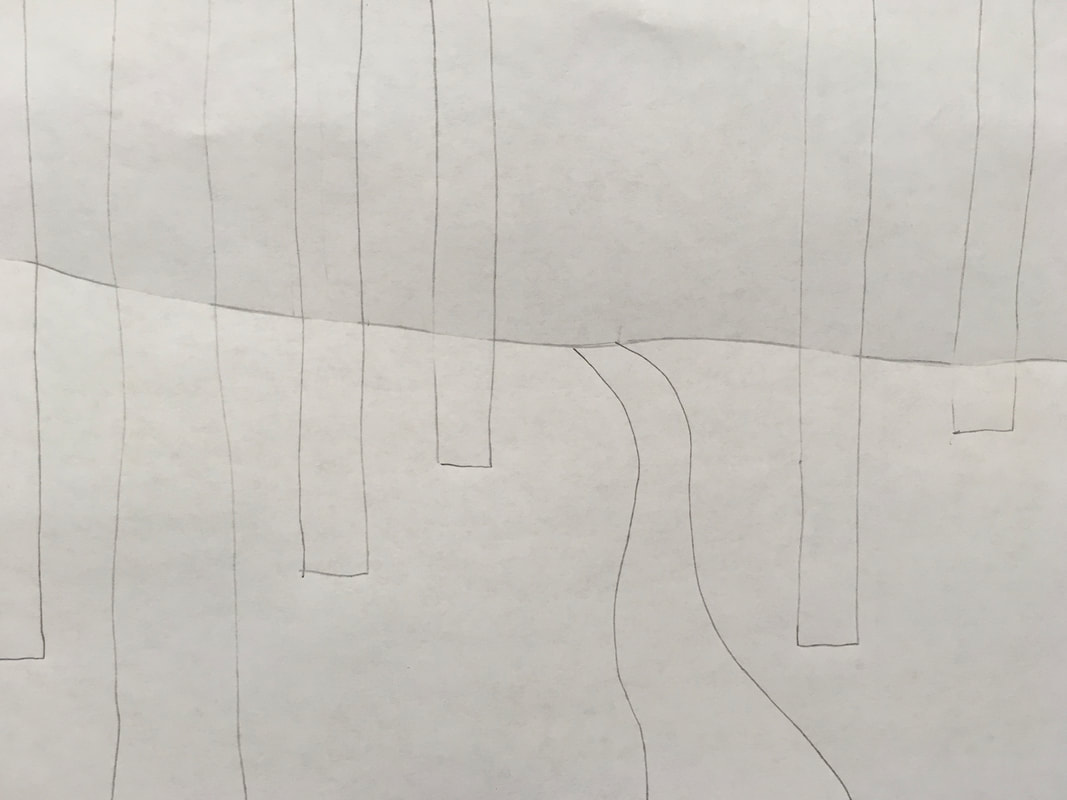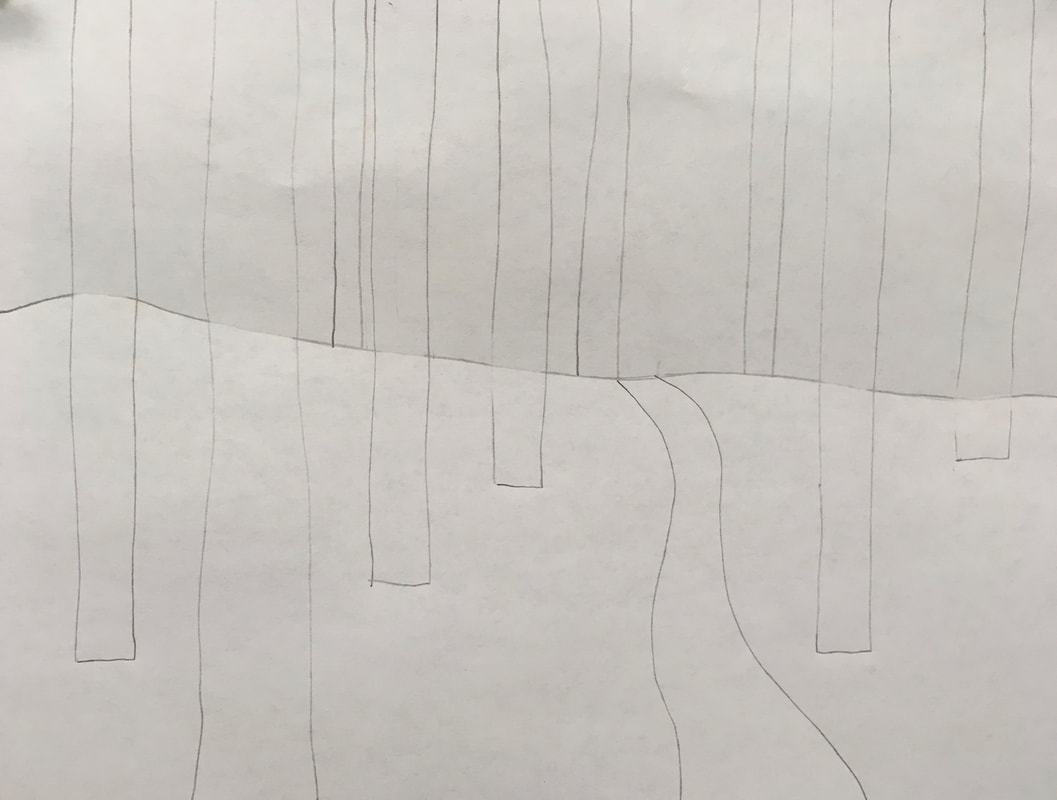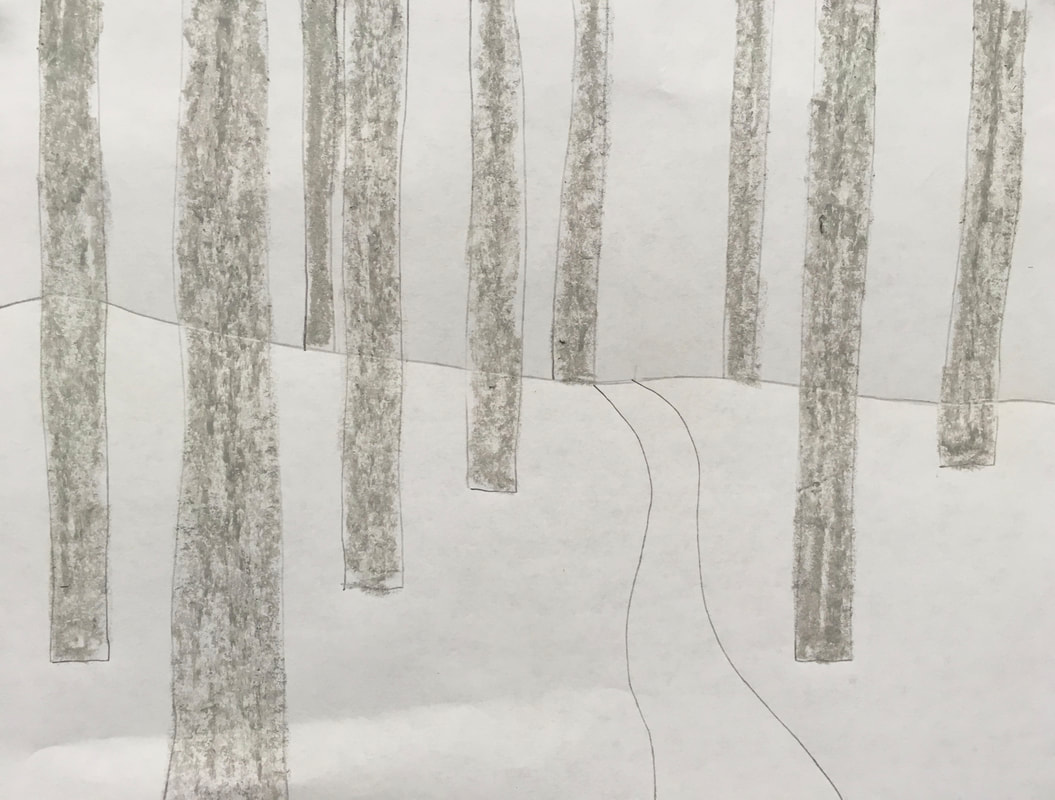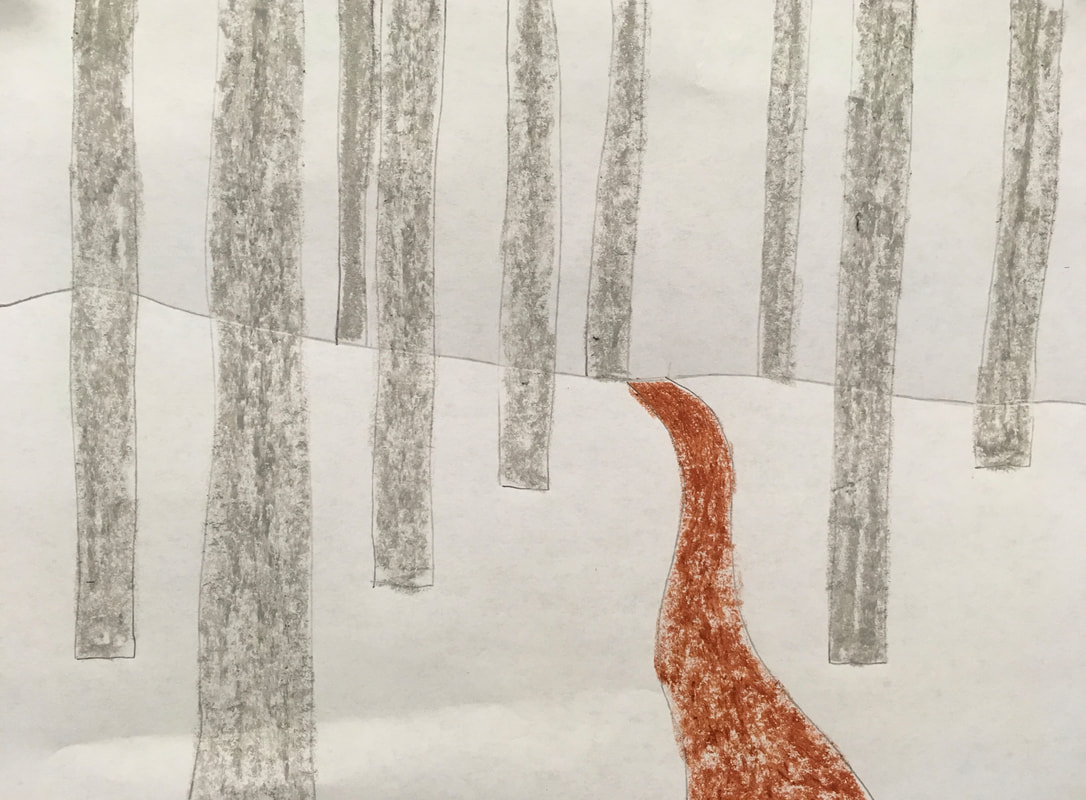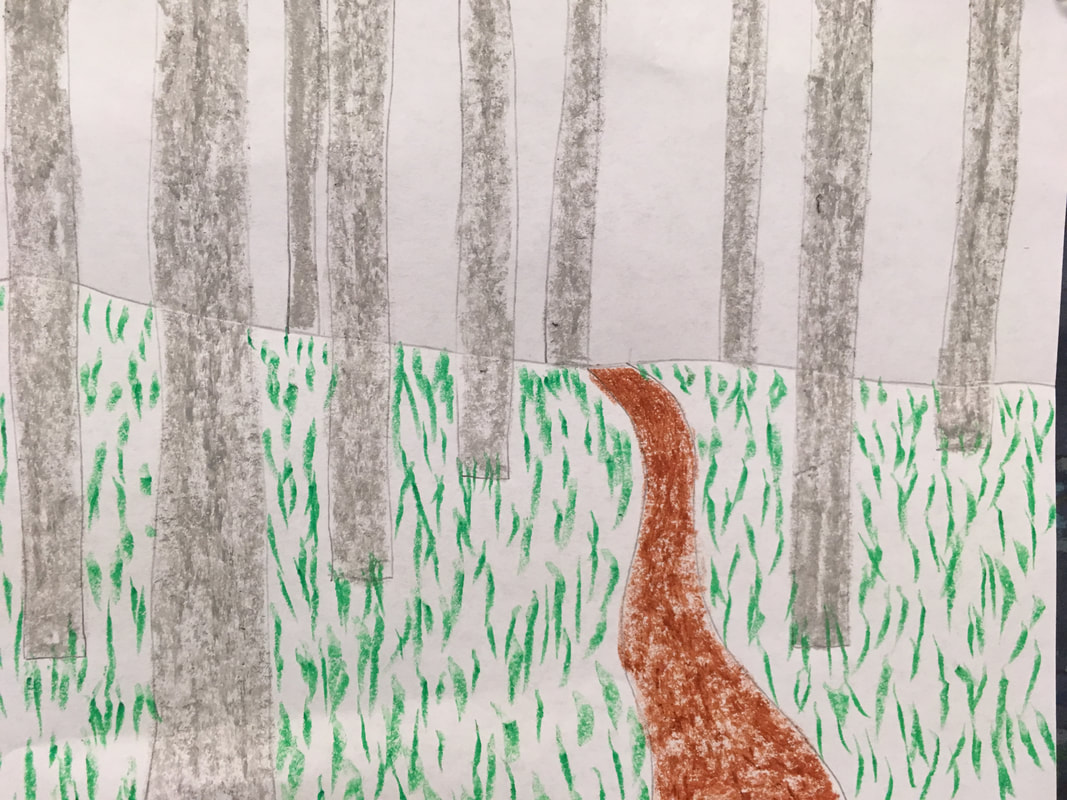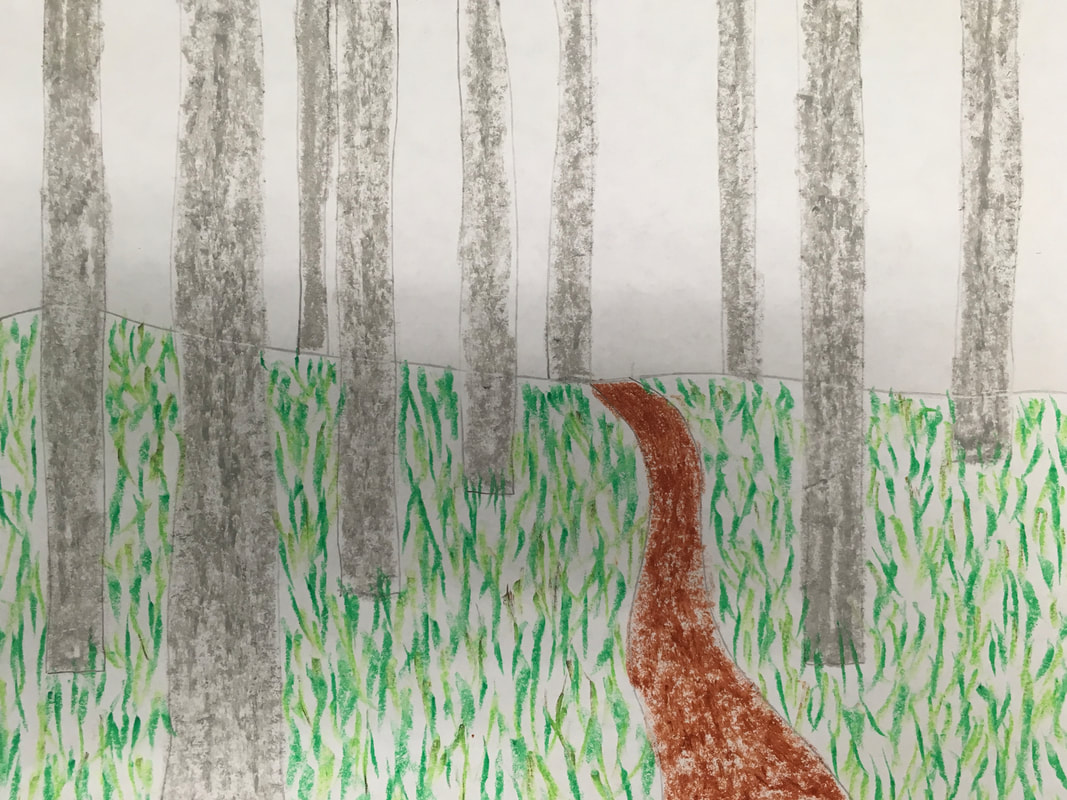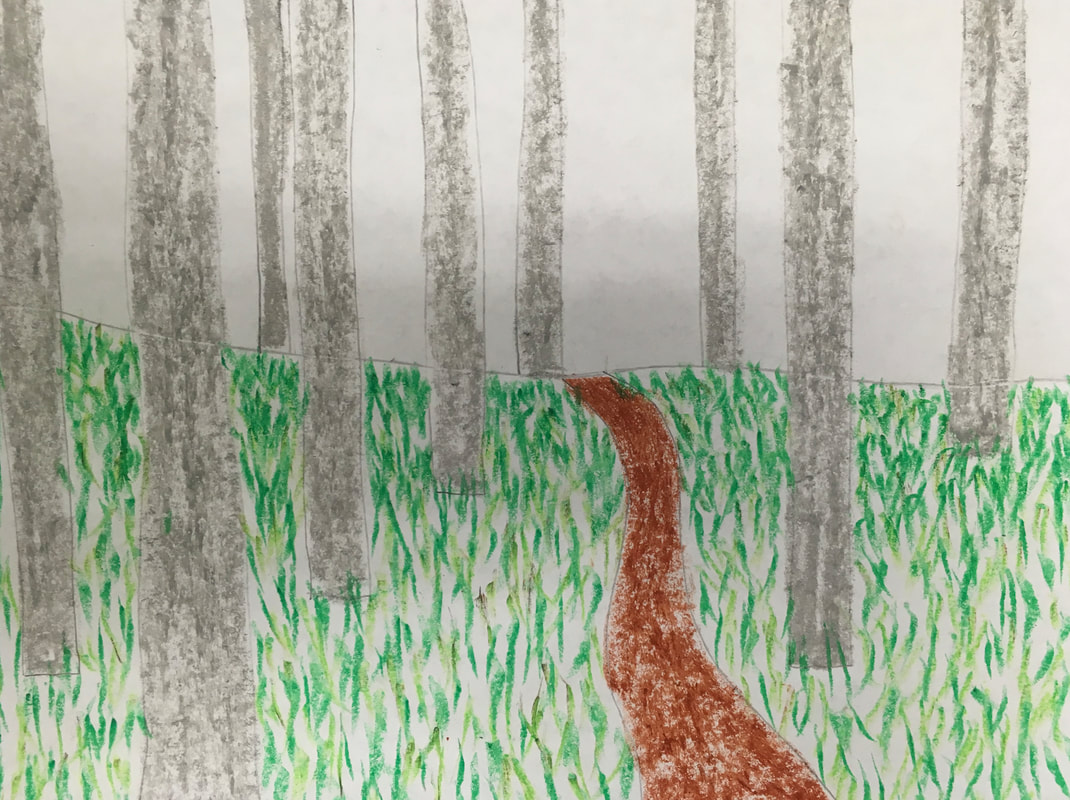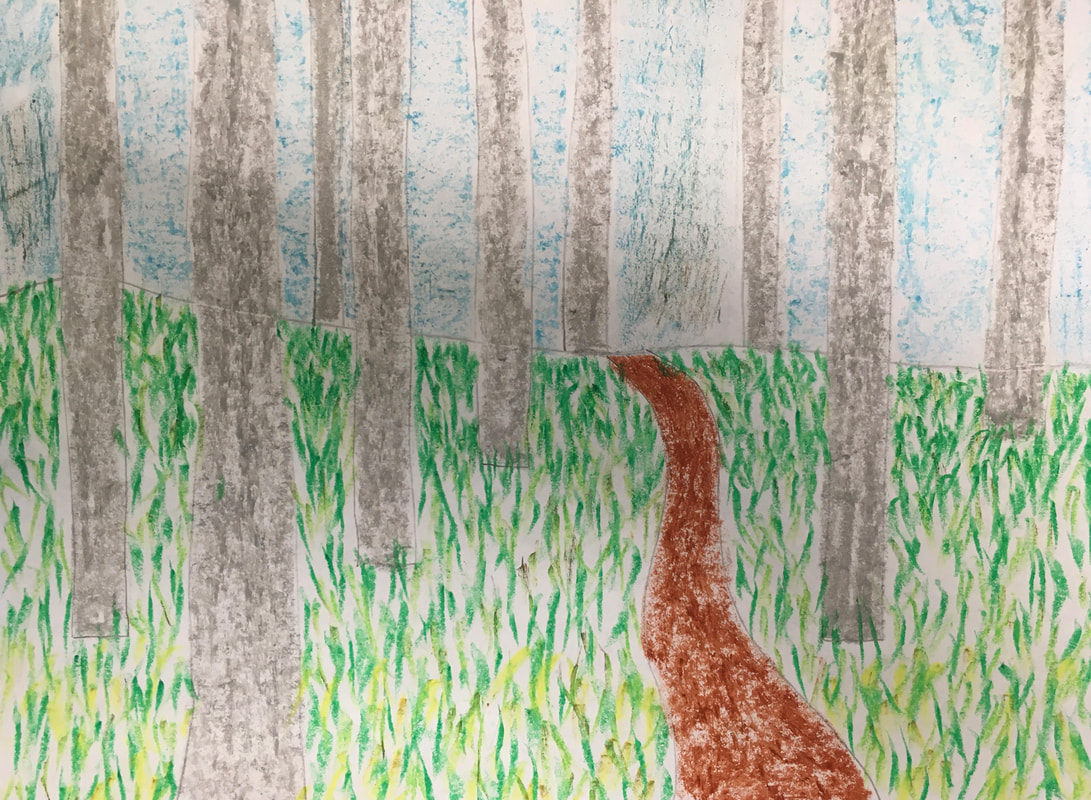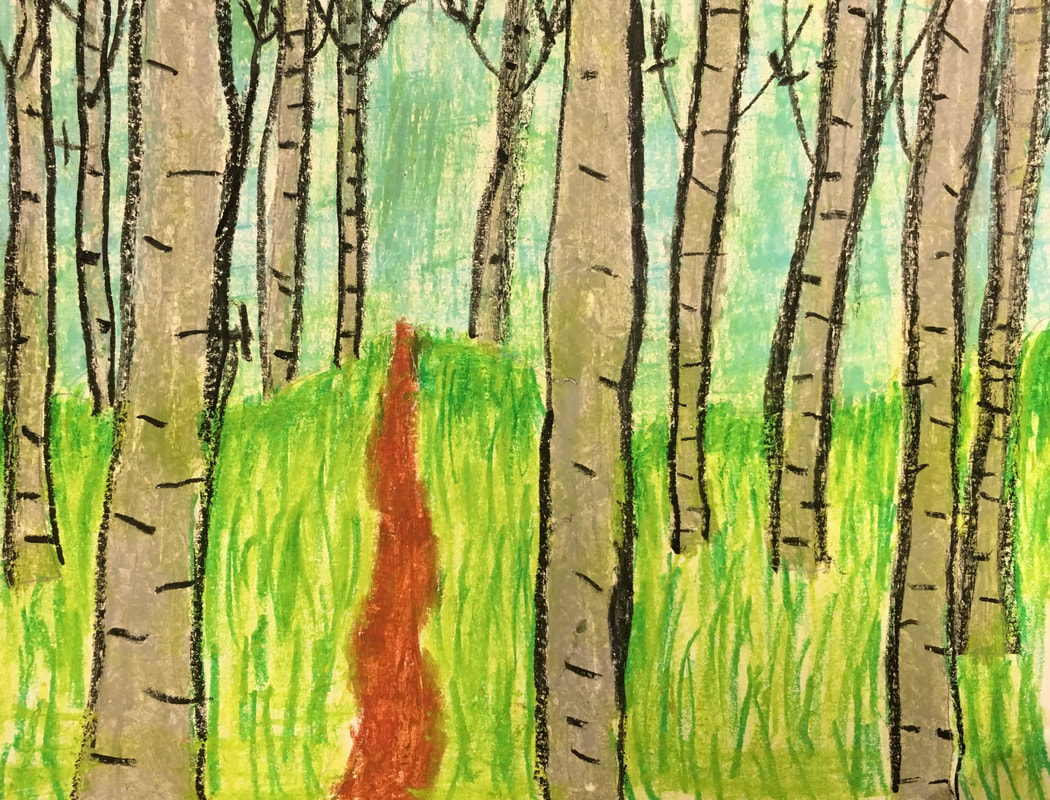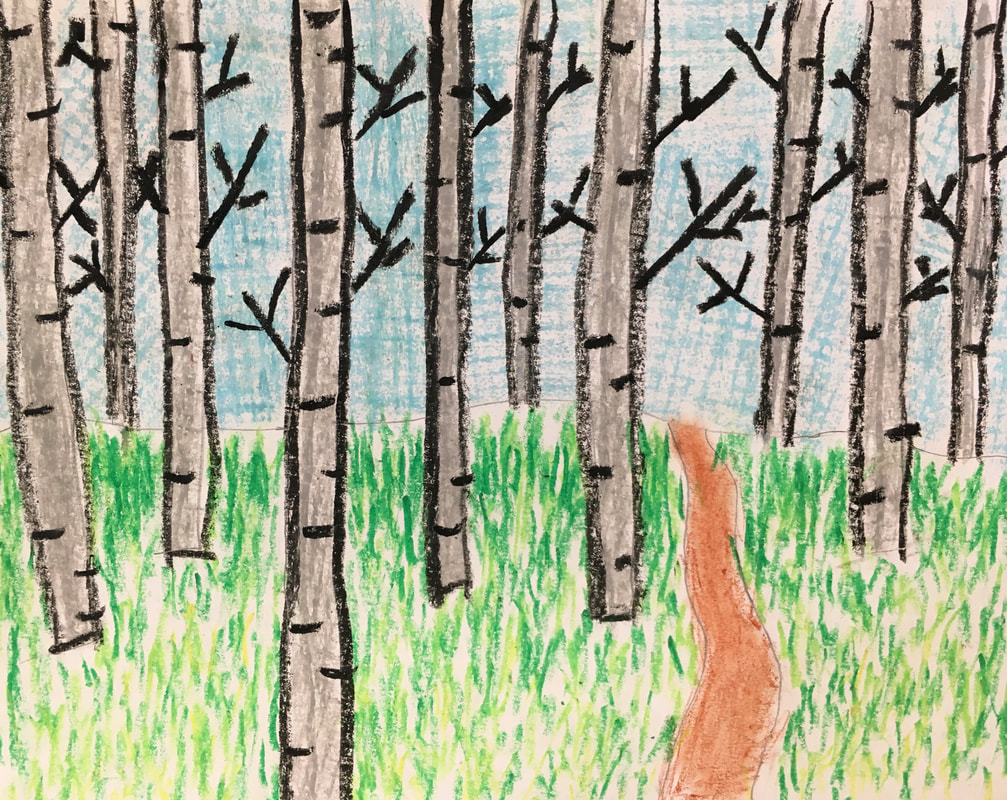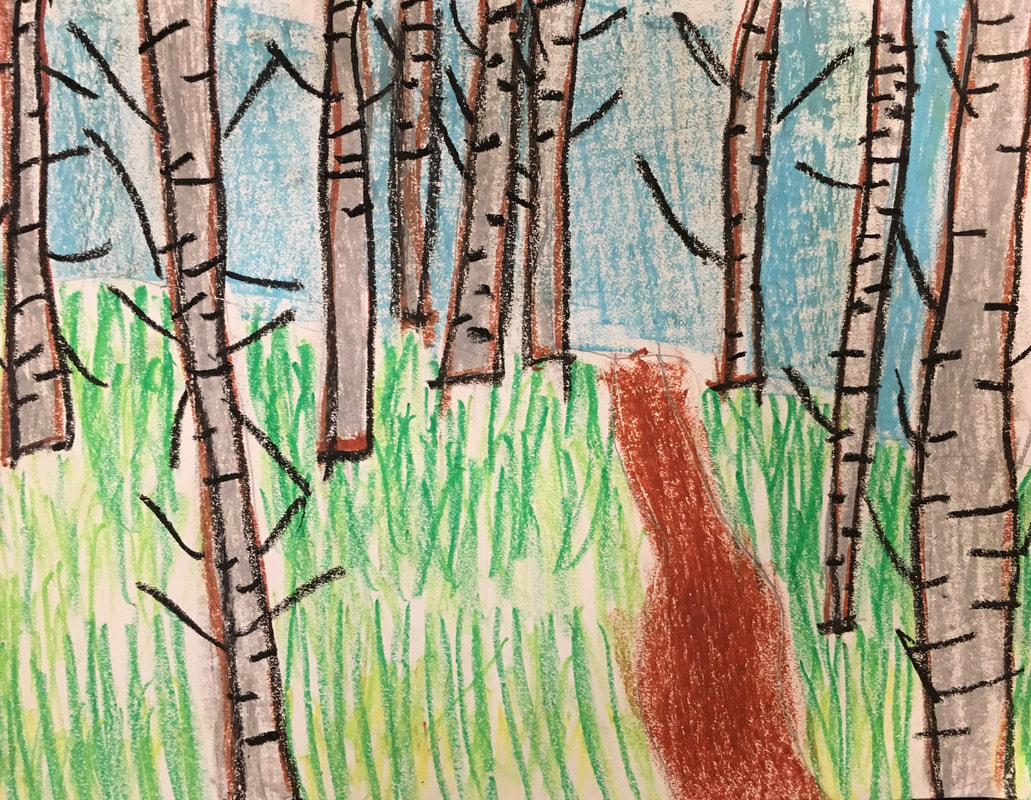landscape - spring forrest of birch trees - 5th grade
The following is a 5th grade art lesson on illustrating a Birch tree forrest. In the lesson students learn how to draw a trees from nature. The lesson uses perspective in a simple landscape.
Scroll down to find:
Scroll down to find:
- examples of Birch tree images
- information on the featured Birch tree
- step-by-step instructions with pictures of the project
- a lesson plan which includes California State Visual Art Standards + the National Art Standards
reference of birch trees
|
Example of bark in this lesson
Birch Tree forrest similar to this lesson
|
step-by-step instructions
|
1 - draw horizon line - does NOT need to be straight - nothing made by nature is perfect
|
2 - from horizon line down to bottom of page - draw line for pathway - not straight
|
3 - add 2nd line of pathway - lines closer together near the horizon line -notice they are farther apart at bottom of page for perspective
|
objective
Students will learn what a Birch tree looks like + be able to illustrate these trees in a forrest. Students will learn how to illustrate a Landscape which shows perspective.
materials
- white drawing paper approx. 9"x12"
- oil pastels
- pencil
- eraser
activity
- Students should express the value of craftsmanship in their artworks.
- Labeling, headlines, + coloring are open for students to show their creative ideas to enhance the artwork.
- There is 1 part to this 5th grade lesson.
- Show students examples of Birch Trees.
- Show students tree details, shapes, in line drawing form.
- Students need to learn to illustrate actual, real life trees. In this lesson, Birch trees.
- Follow step-by-step project instructions given.
- Students should express the value of craftsmanship in their artworks.
- Final project should be open for students to show their creative ideas to enhance the artwork.
vocabulary
- Background - The part of the picture plane that seems be farthest from the viewer.
- Balance - Visual equilibrium in a composition; achieved by organizing the weight and attention of all elements in an artwork. Types of balance are symmetrical, asymmetrical, radial, and crystallographic.
- Color - The visual sensation dependent on the reflection or absorption of light from a given surface. The three characteristics of color are hue, value. and intensity. Color Harmony; The use of compatible colors to help unify a composition.
- Contour Drawings - The drawing of an object as though the drawing tool is moving along the edges and ridges of the form.
- Elements of Art - Sensory components used to create works of art ; line, color, shape, texture, value, space.
- Foreground - Part of a two-dimensional artwork that appears to be nearer the viewer or in the front. Middle ground and background are the parts of a picture that appear to be farther and farthest away.
- Geometrical - Objects, lines, or shapes based on mathematical concepts, such as the circle, square, or rectangle.
- Horizon line - Line where the land or ground and sky meet.
- Middle Ground - Area of a two-dimensional work of art between background and foreground.
- Landscape - A work of the land or outside.
- Line - A point moving in space. Line can vary in width, length, curvature, color, or direction.
- Organic - Refers to shapes having irregular edges or to surfaces or objects resembling things existing in nature.
- Perspective - A system for representing three-dimensional objects viewed in spatial recession on a two-dimensional surface.
- Proportion - The size relationships of one part to the whole and of one part to another.
- Scale - Relative size, proportion. Used to determine measurements or dimensions within a design or work of art.
- Shape - A two-dimensional are or plane that may be open or closed, free-form or geometric. It can be found in nature or is made by humans.
- Space - An area in which objects or images can exist.
- Still Life - Arrangement or work of art showing a collection of inanimate objects.
- Unity - Compositional similarity, oneness, togetherness, or cohesion. Total visual effect in a composition achieved by the careful blending of elements of art and principles of design
clean-up
- have designated area for art works
- depending on the class; have each student clean + put away materials in their work stations or assign jobs/tasks
- wash tables, hands as needed
- leave approx. 10 minutes for clean-up
variation
- use other mediums, such as watercolors, crayons, or colored pencils
- use black paper with tempera paint
- make a series of the same picture in different season (Winter, Spring, Summer, Fall)
ca state visual art standards
1.0 ARTISTIC PERCEPTION
Processing,Analyzing, and Responding to Sensory Information Through the Language and Skills Unique to the Visual Arts.
1.2 Identify and describe characteristics representational, abstract, nonrepresentational, works of art.
4.0 AESTHETIC VALUING
Make Informed Judgements
4.3 Develop and use specific criteria as individuals in groups to assess works of art.
Processing,Analyzing, and Responding to Sensory Information Through the Language and Skills Unique to the Visual Arts.
1.2 Identify and describe characteristics representational, abstract, nonrepresentational, works of art.
4.0 AESTHETIC VALUING
Make Informed Judgements
4.3 Develop and use specific criteria as individuals in groups to assess works of art.
national art standards
CREATING
Anchor Standard 2: Organize and develop artistic ideas and work.
Enduring Understanding: Artists and designers experiment with forms, structures, materials, concepts, media, and art-making approaches.
Essential Questions: How do artists work? How do artists and designers determine whether a particular direction their work is effective? How do artists and designers learn from trial and error?
VA:Cr2.1.5a Experiment and develop skills in multiple art-making techniques and approaches through practice.
Anchor Standard 2: Organize and develop artistic ideas and work.
Enduring Understanding: Artists and designers experiment with forms, structures, materials, concepts, media, and art-making approaches.
Essential Questions: How do artists work? How do artists and designers determine whether a particular direction their work is effective? How do artists and designers learn from trial and error?
VA:Cr2.1.5a Experiment and develop skills in multiple art-making techniques and approaches through practice.
